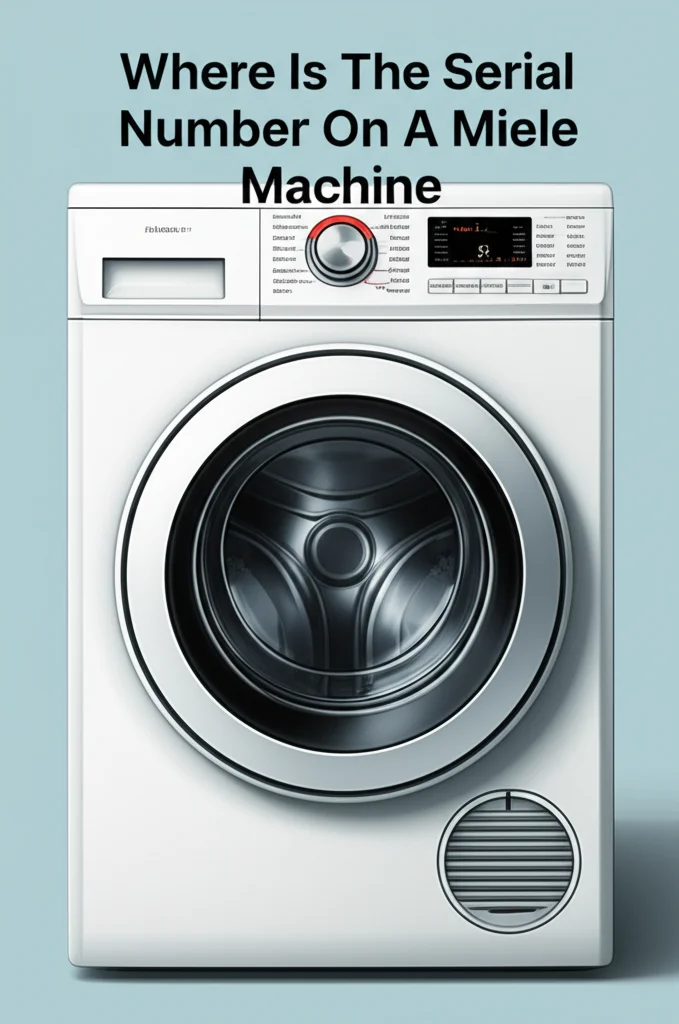· Todd Martin · Appliance Maintenance · 18 min read
How To Clean Fisher And Paykel Vented Dryer

Unlock Peak Performance: How To Clean Your Fisher & Paykel Vented Dryer
Owning a Fisher & Paykel vented dryer brings convenience to your laundry routine. These machines are known for their efficiency and reliable drying. However, like any hard-working appliance, your dryer needs regular cleaning. A clean dryer runs better, dries clothes faster, and uses less energy. Neglecting maintenance can lead to longer drying times, higher utility bills, and even safety hazards. I often find that a little effort in cleaning goes a long way in extending appliance life. This guide will walk you through the precise steps on how to clean your Fisher & Paykel vented dryer, ensuring it operates at its best for years. We will cover everything from the lint filter to the crucial dryer vent.
Takeaway:
- Regularly clean your Fisher & Paykel vented dryer for safety and efficiency.
- Focus on the lint filter, drum, and exhaust vent for best results.
- Always unplug the dryer before deep cleaning.
- Use simple tools and follow safety steps.
To clean a Fisher & Paykel vented dryer, regularly empty the lint filter, wipe down the drum, and thoroughly clean the exhaust vent system. This removes lint buildup, prevents fire hazards, and maintains drying efficiency.
Why Regular Dryer Cleaning Matters for Your Fisher & Paykel
Maintaining your Fisher & Paykel vented dryer is more than just about clean clothes. It directly impacts the machine’s performance and your home’s safety. Lint and debris accumulate inside the dryer over time. This buildup reduces airflow, making your dryer work harder. A dryer that works harder uses more electricity.
Reduced airflow also means clothes take longer to dry. This frustrates me when I have a lot of laundry to do. More importantly, lint is highly flammable. A significant amount of dryer fires start from lint buildup in the vent system. Cleaning your Fisher & Paykel dryer regularly prevents these dangerous situations.
Proper cleaning also extends the life of your appliance. A well-maintained dryer experiences less wear and tear on its components. This means fewer breakdowns and costly repairs. Think of it as preventative care for your valuable investment. You want your dryer to last as long as possible.
Understanding how to clean your dryer is a basic but important home skill. Fisher & Paykel dryers, like all vented dryers, depend on clear airflow. This ensures efficient moisture removal. Keeping the air paths clear allows your dryer to function as designed. It also keeps your energy bills lower.
My personal experience shows that a dryer running efficiently feels better. Clothes come out dry on the first cycle. The machine itself does not overheat. This provides peace of mind. Knowing why an electric dryer needs to be vented helps you appreciate the cleaning process more. It emphasizes the importance of a clear vent for safe operation.
Essential Tools and Safety Precautions for Dryer Cleaning
Before you begin cleaning your Fisher & Paykel vented dryer, gather the necessary tools. Having everything ready saves time and effort. You likely have most of these items around your home. I always make a checklist before starting any home project. This ensures I do not miss anything important.
Here are the tools you will need:
- Vacuum cleaner with hose attachments: A narrow crevice tool is very useful.
- Lint brush or dryer vent cleaning kit: These long brushes reach deep into the vent.
- Screwdriver: For removing panels or vent clamps if needed.
- Bucket of warm, soapy water: For cleaning the lint filter and drum.
- Microfiber cloths: For wiping surfaces.
- Work gloves: To protect your hands.
- Duct tape or clamps: For reattaching vent hoses.
Safety is paramount when working with any appliance. Your dryer uses electricity and can get very hot. Always prioritize these safety steps:
- Unplug the dryer: This is the most crucial step. Disconnect the dryer from its power source before starting any cleaning. This prevents electric shock. I cannot stress this enough; never work on an appliance while it is plugged in.
- Allow the dryer to cool: If you just ran a cycle, wait for the machine to cool down completely. This prevents burns.
- Wear gloves: Lint and dust can be messy. Gloves protect your hands from dirt and sharp edges.
- Work in a well-lit area: Good lighting helps you see lint and debris more clearly.
- Follow your dryer’s manual: While this guide provides general steps, always refer to your specific Fisher & Paykel model’s user manual. It may have unique cleaning instructions or warnings.
Preparing these tools and following these safety measures ensures a smooth and safe cleaning process. Knowing how to clean a dryer machine safely is key. These steps help you maintain your appliance without risk.
Step-by-Step Guide: Cleaning the Lint Filter and Housing
Cleaning the lint filter is the easiest and most frequent task for your Fisher & Paykel vented dryer. You should do this after every load of laundry. A clogged lint filter drastically reduces drying efficiency. It also increases the risk of fire. This is a simple habit to adopt.
1. Cleaning the Lint Filter After Each Load:
After your clothes are dry, open the dryer door. The lint filter is usually located in the door frame or on top of the dryer. Simply pull out the filter. Use your fingers to peel off the accumulated lint. Discard the lint in a trash can. Then, slide the clean filter back into its slot. This quick step takes only seconds.
2. Deep Cleaning the Lint Filter:
Even with regular lint removal, a film can build up on the filter screen. This film comes from fabric softener sheets or dryer sheets. It clogs the tiny holes in the screen. This reduces airflow just like lint does. I recommend deep cleaning your lint filter every few months.
Here is how to deep clean it:
- Remove the lint filter from the dryer.
- Use a soft brush or your fingers to remove any visible lint.
- Hold the filter under warm, running water. If water beads up on the screen, it indicates a film buildup.
- Fill a sink with warm, soapy water. Use a mild detergent.
- Submerge the lint filter in the soapy water.
- Use a soft brush (like an old toothbrush) to gently scrub both sides of the screen.
- Rinse the filter thoroughly under running water. Ensure all soap residue is gone.
- Allow the filter to air dry completely before putting it back into the dryer. A wet filter can cause lint to stick.
3. Cleaning the Lint Filter Housing:
The area where the lint filter sits can also collect lint and dust. Use your vacuum cleaner with a crevice tool to reach inside this slot. Carefully vacuum out any loose lint. Be gentle to avoid damaging internal components. This ensures maximum airflow into the dryer’s exhaust system.
By following these steps, you keep your Fisher & Paykel dryer’s primary defense against lint buildup clear. This helps maintain efficiency. It also keeps your home safer. Remember, a clean filter is a happy dryer. It is a vital part of knowing how to clean your dryer machine effectively.
Deep Cleaning the Dryer Drum and Interior
Once the lint filter is clean, turn your attention to the dryer drum. The drum is where your clothes tumble. It can accumulate dirt, residue from fabric softeners, or even marks from items left in pockets. A clean drum ensures your clothes come out fresh and spotless. It also prevents odors from transferring to your laundry. I always find a clean drum makes my clothes smell better.
1. Wiping Down the Dryer Drum:
Start by wiping the inside of the drum.
- Dampen a soft microfiber cloth with warm water.
- Add a small amount of mild liquid detergent or a mixture of white vinegar and water.
- Wipe down the entire interior surface of the drum. Pay attention to any sticky spots or dark marks.
- For stubborn stains, you might need a bit more elbow grease. Avoid abrasive cleaners or harsh chemicals. These can damage the drum’s finish.
- After cleaning, wipe the drum again with a clean, damp cloth to remove all soap residue.
- Finally, use a dry cloth to thoroughly dry the drum. You do not want moisture sitting inside.
2. Addressing Odors in the Dryer Drum:
Sometimes, your dryer might develop a musty or stale odor. This can happen from damp clothes sitting too long. Or it can be due to lint and moisture buildup in hidden areas.
- To eliminate odors, you can use white vinegar or baking soda.
- Place a few old towels soaked in white vinegar into the dryer. Run a cycle on a low heat setting for about 15-20 minutes. The vinegar helps neutralize odors.
- Alternatively, place a bowl of baking soda inside the dryer overnight with the door closed. Baking soda absorbs odors.
- For persistent smells, you may need to investigate the dryer vent system. A clogged vent can trap moisture and cause odors. This links to how to clean a smelly dryer.
3. Cleaning Moisture Sensor Bars:
Most modern dryers, including Fisher & Paykel models, have moisture sensor bars. These metal strips inside the drum detect when clothes are dry. They signal the dryer to stop. Over time, these sensors can get coated with a film from laundry detergents or fabric softeners. This film prevents accurate readings. The dryer might then over-dry or under-dry your clothes.
- Locate the two or three metal strips, usually near the lint filter or at the front of the drum.
- Dampen a clean cloth with rubbing alcohol or white vinegar.
- Gently wipe down the sensor bars to remove any residue. Do not use abrasive materials.
- Allow the sensors to air dry.
By deep cleaning the drum and sensors, you ensure your Fisher & Paykel dryer continues to deliver fresh, perfectly dried laundry. This contributes to the overall cleanliness of your laundry appliances. It goes hand in hand with knowing how to clean your dryer completely.
Cleaning the Dryer Vent System: The Critical Step
Cleaning the dryer vent system is arguably the most important part of maintaining a Fisher & Paykel vented dryer. This is where most lint accumulates outside of the lint filter. A clogged dryer vent can cause your dryer to run inefficiently. More critically, it poses a significant fire hazard. I always make sure this step is not overlooked.
The dryer vent is the exhaust path for hot, moist air and lint from your dryer to the outside. It typically consists of a flexible or rigid duct connected to the back of the dryer and leading through a wall to an outside vent hood.
1. Disconnecting the Dryer and Accessing the Vent:
- First, unplug the dryer from its power outlet.
- Carefully pull the dryer away from the wall. You will need enough space to work behind it.
- Locate the dryer vent hose at the back of the machine. It is usually a large, flexible hose.
- Loosen the clamp that holds the hose to the dryer’s exhaust port. You might need a screwdriver or pliers.
- Gently detach the hose from the dryer and from the wall vent connection. Be careful not to tear the hose.
2. Cleaning the Vent Hose:
- Once detached, take the vent hose outside if possible.
- Use a vacuum cleaner with a long hose attachment to vacuum out as much lint as you can from both ends.
- For deeper cleaning, use a specific dryer vent brush kit. These kits come with long, flexible rods that connect together. They allow you to push a brush through the entire length of the hose.
- Rotate the brush as you push it through to dislodge lint. Pull the brush back out slowly, bringing lint with it. Repeat until no more lint comes out.
- Inspect the hose for any damage or kinks. Replace flexible plastic hoses with rigid metal ones if possible. Metal hoses are safer and more durable. They collect less lint. This is why how to clean a dryer vent is so vital for safety.
3. Cleaning the Dryer’s Exhaust Port:
- After detaching the hose, look at the exhaust port on the back of the dryer. Lint often builds up around this opening.
- Use your vacuum cleaner’s crevice tool to thoroughly clean this area. Reach as far into the dryer’s exhaust opening as you can.
4. Cleaning the Outside Vent Hood:
- Go outside to locate the dryer vent hood on your home’s exterior wall.
- Check the vent flap or cover. It should open easily when the dryer runs and close when it is off.
- Remove any lint, bird nests, or debris that might be blocking the opening. A vacuum cleaner or a brush can help here.
- Some vent hoods have a screen. If yours does, remove the screen. Screens can trap lint and should generally be removed for dryers. They are more common for bathroom fans. This is a crucial area for how to clean your dryer comprehensively.
Reattach the hose securely with clamps once all parts are clean. Ensure there are no kinks in the hose. Pull the dryer back into place. Remember to plug it back in. This thorough vent cleaning should be done at least once a year, or more often if you use your dryer heavily.
Inspecting and Maintaining Other Dryer Components
Beyond the lint filter and vent, your Fisher & Paykel dryer has other components that benefit from periodic inspection and care. These checks ensure overall machine health. They also prevent small issues from becoming larger, more expensive problems. I always take a moment to look at these details.
1. Checking the Exhaust Hose and Connections:
- After cleaning the main vent, double-check the exhaust hose itself. Look for any signs of wear, tears, or crushing. A damaged hose can leak moist air into your laundry room. This creates humidity and reduces drying efficiency.
- Ensure the hose is properly secured to both the dryer and the wall connection. Use appropriate clamps. Make sure the hose is as straight as possible with minimal bends. Sharp bends restrict airflow. This is relevant to questions like can an LG dryer be vented from the side, as proper venting angle and short duct run apply to all brands, including Fisher & Paykel.
- If your dryer hose is the flexible plastic or foil type, consider replacing it with a rigid metal duct. Metal ducts are more fire-resistant. They also provide a smoother path for air, reducing lint buildup.
2. Inspecting the Power Cord and Plug:
- Examine the power cord for any fraying, cuts, or damage. A damaged cord is a serious fire and shock hazard.
- Check the plug to ensure it fits snugly into the wall outlet. If the plug or outlet feels hot to the touch, this could indicate a wiring issue. You should consult an electrician immediately. Never force a plug into an outlet.
- Ensure the dryer is plugged into a dedicated outlet with the correct voltage. Most electric dryers require a 240-volt outlet.
3. Cleaning the Dryer Exterior:
- Wipe down the outside of your Fisher & Paykel dryer. Use a damp cloth and mild all-purpose cleaner. This keeps the appliance looking good. It also prevents dust from entering the internal components.
- Pay attention to the control panel. Use a soft, slightly damp cloth to wipe it gently. Avoid spraying cleaners directly onto the controls.
- Clean around the dryer door seal. Lint and debris can accumulate here. This can prevent the door from sealing properly. A poor seal allows hot air to escape.
4. Leveling the Dryer:
- Periodically check that your dryer is level. An unlevel dryer can vibrate excessively. This causes noise and puts strain on internal parts.
- Most dryers have adjustable feet. You can turn these feet to raise or lower each corner until the dryer is stable. Use a spirit level to confirm it is flat.
By regularly performing these inspections, you contribute to the overall longevity and safe operation of your Fisher & Paykel vented dryer. These small steps make a big difference in the long run. They are part of a thorough approach to how to deep clean washer and dryer.
Troubleshooting Common Dryer Issues After Cleaning
Even after a thorough cleaning, you might encounter some common issues with your Fisher & Paykel vented dryer. Do not panic immediately. Often, these are minor and easy to resolve. My goal is always to get things working right again quickly.
1. Dryer Still Takes Too Long to Dry Clothes:
If your dryer is taking longer than usual to dry, even after cleaning, consider these points:
- Check the vent path again: Did you miss a clog in the main vent duct? Re-examine the entire length from the dryer to the outside. Kinks in the hose are a common culprit.
- Outside vent flap: Is the outside vent flap opening fully when the dryer runs? If it is stuck or blocked, airflow is restricted.
- Overloading: Are you consistently overloading the dryer? Too many clothes prevent proper tumbling and airflow.
- Moisture sensor issue: Clean the moisture sensor bars again with rubbing alcohol. If they are faulty, the dryer might stop prematurely.
- Wet clothes from washer: Ensure your washing machine is fully spinning water out of clothes. A washer issue can make dryer efficiency seem low.
2. Dryer is Making Unusual Noises:
Odd noises usually point to a mechanical issue, not a cleaning issue.
- Thumping or banging: Could be worn drum rollers or idler pulley.
- Squealing: Often indicates a worn belt or motor bearing.
- Rattling: Check for loose items in the drum or behind the dryer.
These issues generally require professional service.
3. Dryer is Getting Too Hot:
An overheating dryer is a serious concern.
- Immediate action: Unplug the dryer immediately.
- Clogged vent: This is the most common cause of overheating. Re-clean the vent system thoroughly. A blocked vent traps heat inside the dryer.
- Thermostat or heating element: If the vent is clear, the problem might be with the thermostat or heating element. This requires a professional repair technician. Do not use the dryer until it is fixed.
4. Dryer Not Starting:
If your Fisher & Paykel dryer does not start after you have cleaned it:
- Power check: Ensure it is plugged in securely. Check the circuit breaker. Sometimes, simply flipping the breaker off then on again resets it.
- Door switch: The door switch must be fully engaged for the dryer to start. Make sure the door is firmly closed.
- Start button: Is the start button fully pressed and working?
If issues persist after troubleshooting, it is time to call a qualified appliance repair technician. Attempting complex repairs yourself can be dangerous and void your warranty. Regular cleaning prevents many problems, but not all. Knowing when to seek help is important for keeping your home safe. It is a key part of maintaining your machine after knowing how to clean your dryer machine.
Frequently Asked Questions
How often should I clean my Fisher & Paykel dryer vent?
You should clean your Fisher & Paykel dryer’s external vent system at least once a year. If you use your dryer heavily, dry pet hair, or have a long vent run, consider cleaning it every six months. Regular cleaning prevents lint buildup, which improves efficiency and reduces fire risk.
Can I use household cleaners on my dryer drum?
Yes, you can use mild household cleaners on your dryer drum. A mixture of warm water and a small amount of liquid dish soap works well. White vinegar is also effective for cleaning and odor removal. Avoid abrasive cleaners or harsh chemicals as they can damage the drum’s finish or leave residue on your clothes.
What happens if I do not clean my dryer lint filter?
Not cleaning your dryer lint filter regularly reduces airflow. This makes your dryer take longer to dry clothes and consume more energy. It also creates a significant fire hazard, as lint is highly flammable. Clean the lint filter after every single load of laundry for safety and efficiency.
How do I know if my dryer vent is clogged?
Signs of a clogged dryer vent include clothes taking longer to dry, clothes feeling unusually hot after a cycle, or the dryer itself feeling hot to the touch. You might also notice a burning smell. Reduced airflow from the outside vent hood is another indicator of a blockage.
Should I hire a professional for dryer vent cleaning?
For complex or very long dryer vent systems, hiring a professional for cleaning is a good idea. Professionals have specialized tools to reach deep blockages and can inspect the entire system for issues. For simple, accessible vents, you can often perform the cleaning yourself with a good vent brush kit.
Is it safe to use a dryer with a damaged exhaust hose?
No, it is not safe to use a dryer with a damaged exhaust hose. A damaged hose can leak hot, moist air and lint into your home, creating a fire hazard and promoting mold growth. Always replace a damaged or crushed dryer exhaust hose immediately with a rigid metal duct for safety and efficiency.
Conclusion
Keeping your Fisher & Paykel vented dryer clean is a simple yet crucial maintenance task. It ensures your appliance runs efficiently, dries your clothes perfectly, and, most importantly, keeps your home safe. We have covered every essential step, from the daily lint filter cleaning to the critical annual vent system overhaul. By following these guidelines, you extend the lifespan of your valuable Fisher & Paykel appliance.
Remember, a little preventive maintenance goes a long way. Regularly cleaning your Fisher & Paykel vented dryer prevents inefficient operation and reduces the risk of fire. It saves you money on energy bills and potential repair costs. Do not let lint become a problem. Make dryer cleaning a consistent part of your home maintenance routine. Start today to enjoy a safer, more efficient laundry experience. Your dryer, and your home, will thank you for it.





